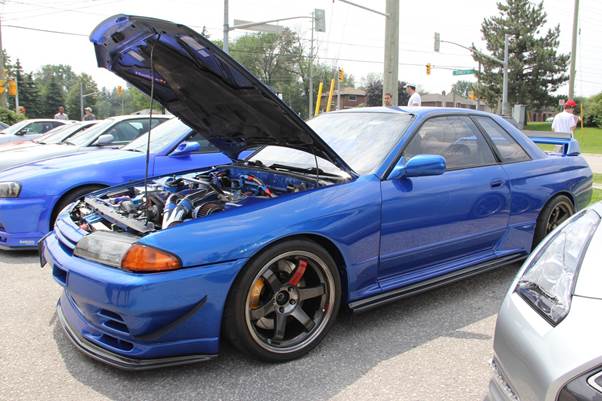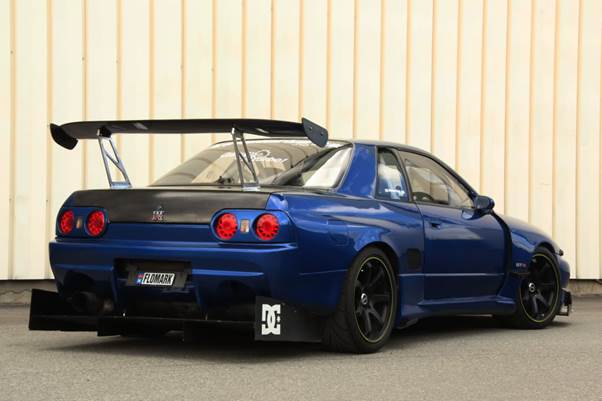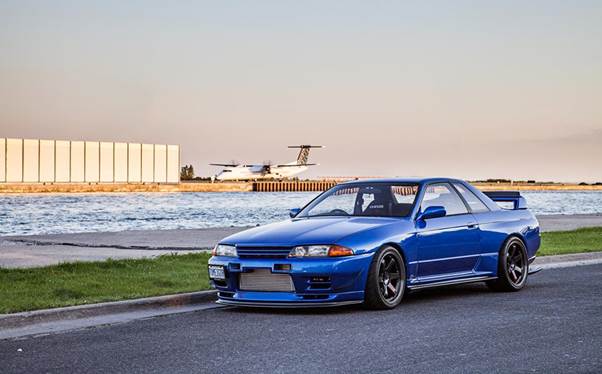The NHTSA's 25-year rule means that vehicles sold
in 1989 or earlier are now fair game for importation into the U.S. If all is
right with your brain, when you think of 1989 you think of Nissan's
introduction of the R32 Skyline
The 25th anniversary of Nissan's R32
Skyline GT-R hasn't just gotten you all riled up about one of the finest sports
cars to ever come from Japan, it's also lent itself to becoming the spokes car
for importing just about anything else into the U.S.
You’ll need to contact California’s state referee to find
out which specific test lab to go. Once there, and once you fail, perform the
necessary modifications to bring the powertrain into California compliance,
pull another $1,500 out of the ATM, and revisit the lab. It isn’t uncommon for this
to take multiple attempts.
Right about now, you might be thinking this is the extent of
the red tape, but it isn't. As it turns out, you'll need to crack open your
wallet for all sorts of other important things, like the THD (Terminal Handling
Charge) that covers the loading and unloading of the container, a tariff tax
that the federal government says you now owe them, bond fees, filing fees,
processing fees, port fees, and more money to the federal government, this time
to Customs and Border Protection for the vehicle's entry fee.

Right about now,
you might be thinking this is the extent of the red tape, but it isn't. As it
turns out, you'll need to crack open your wallet for all sorts of other
important things, like the THD (Terminal Handling Charge) that covers the
loading and unloading of the container
As it turns out, Customs and Border Protection will require
you to fill out another form—this time an ISF (International Security Filing).
You'll need to have this submitted no later than a full day before the
container leaves
Japan. If all of this sounds confusing, that's because it
is, which means hiring a customs broker that's familiar with importing vehicles
will never be a bad idea. Bungling up any one of these things can mean the
difference between the GT-R you paid for sitting in a locked container at the
docks collecting dust and you actually driving it.
Once your GT-R has arrived, you can't just mosey on over to
the Port of Long Beach, crack open your container, and drive it home. You've
got to set up an appointment, do a whole lot of waiting, and be escorted onto
the premises to take delivery. Be sure that your paperwork is in order before
any of this; if it isn't, you won't be going anywhere with what you just paid
for and will be responsible for daily storage fees that can accrue above the
car's value. If you plan on driving it once registered, you'll also need to get
it insured; check with your insurance provider before doing anything because,
chances are, they may not be interested in covering a car they never knew
existed.

It's important to
mention that this isn't the only way to import a foreign vehicle into the U.S.
For example, the federal Show or Display rule that some of you are probably
familiar with has permitted importation of non-conforming vehicles for, you
guessed it, show or display purposes since 1999.
It's important to mention that this isn't the only way to
import a foreign vehicle into the U.S. For example, the federal Show or Display
rule that some of you are probably familiar with has permitted importation of
non-conforming vehicles for, you guessed it, show or display purposes since
1999. Of course, there are similar challenges that must be addressed here, and
Show or Display vehicles may only be driven 2,500 miles each year. You've also
got to prove that whatever it is you plan on importing is of some historical
significance to the general public, which is easy to do in the case of the GT-R
that dominated Japanese touring car racing throughout the early 1990s. In other
words, somebody's got to actually care about this thing other than you.
The irony of how easy it now is to import something with a
25-year-old emissions system compared to the difficulty of bringing over
something clean-burning from last year shouldn't escape you and makes about as
much sense as the NHTSA and EPA not agreeing on something as simple as a single
year. The good news, though, is that very soon all of this will apply not just
to the R32 GT-R, but to other cars you care about, like Honda's NSX-R, for
example. Let the waiting period commence.
Or its Department of Motor Vehicles (DMV) agrees. As it
turns out, they most certainly do not.

The good news,
though, is that very soon all of this will apply not just to the R32 GT-R, but
to other cars you care about, like Honda's NSX-R, for example. Let the waiting
period commence.